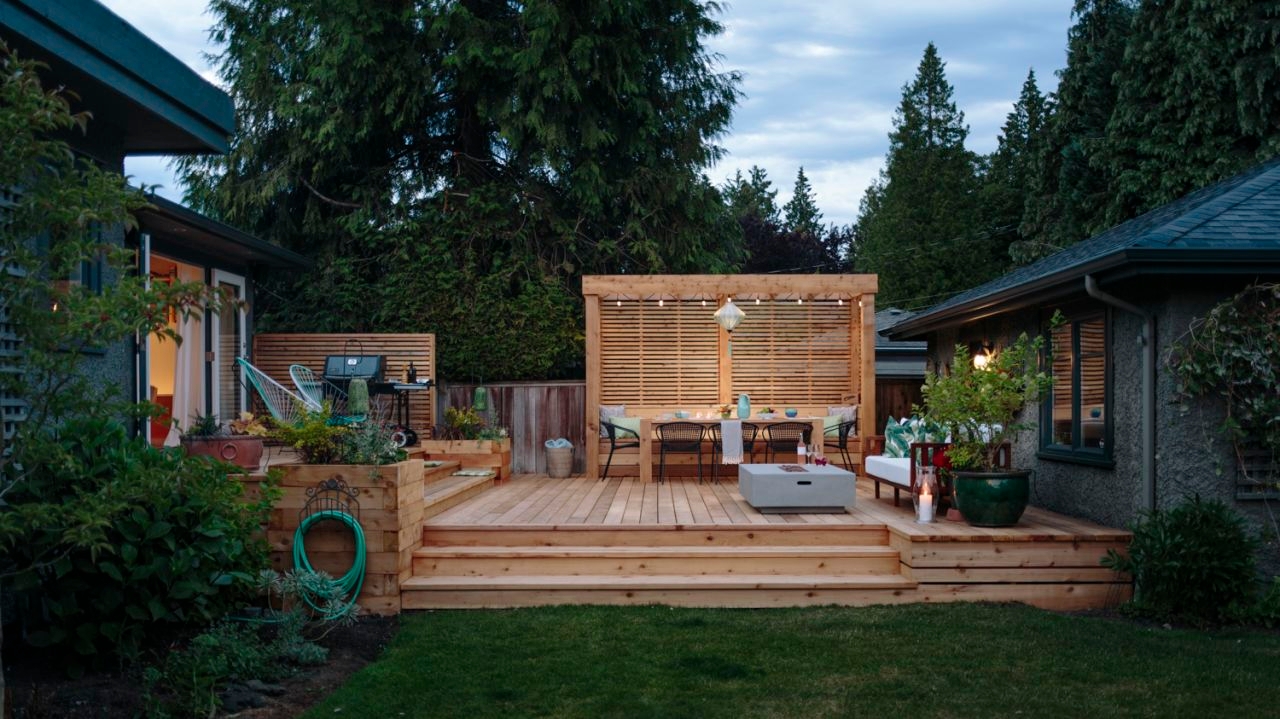Back
Back
Back
Back
Back
Back
Back
Back
Back
Back
USA & Canada
How to Save Money on Your Outdoor Projects

Sign up now for our DIY Project Newsletter
How to Save Money on Your Outdoor Projects
Whether you’re a professional builder or DIYer, you want to keep an eye on the cost of your project. Here are Real Cedar’s top three Pro Tips on how to lower the cost of your lumber:
- Incorporate Non-Standard Lengths
Building a beautiful Western Red Cedar deck? Good call! Western Red Cedar not only looks great, it’s naturally resistant to rot, decay and insects, which means your structure is going to last a long time with minimal maintenance. Furthermore, when you factor in its stunning appearance and incredibly strong performance properties, cedar is a relatively affordable building material. But if you want to save even more money, consider incorporating 10-foot, 14-foot and 18-foot lengths into your design.
Here’s why: when specifying Western Red Cedar decking, the price of 10s, 14s and 18s is often less per foot than the same material in other lengths. That’s because most building codes require you to build decks 16” or 24” on center, so divisible lengths – or “prime lengths” like 8-foot, 12-foot and 16-foot are more in demand and tend to sell for more.
Need more info on how to specify, store and finish Real Cedar products? Visit our decking section for pro tips and how-to videos.
- Ask for Shorter Lengths
For smaller projects such as Adirondack chairs or picnic tables, you often don’t need longer lengths like 16s, 18s and 20s. These lengths are generally more expensive per board foot because they’re harder to manufacture. Why? Raw logs like Western Red Cedar are wider at the base than at the top, meaning they yield fewer long boards than shorter ones so tighter supplies result in higher prices.
That’s why building professionals know to ask their local Real Cedar supplier if they carry any shorter lengths. So not only does this mean less cutting, it also means more money left in your pocket. For decking projects, you can ask for shorter lengths as well. You can either stagger the boards, keeping in mind you may end up with more butt joints. But that can add a lot of visual interest to the deck. For a cleaner geometrical look, another option is to use a transition piece. For example, instead of using all 20s, use twice as many 10s and run a horizontal piece between the two sets of 10s. You may need an extra joist or two, but the savings can be significant.
Use the Western Red Cedar decking calculator and find a Real Cedar supplier near you on our website and ask if they carry or can order shorts.
- Consider Knotty Grades
Architecturally, clear and knotty grades of cedar are both superior products when it comes to performance and appearance. They both boast a naturally beautiful tonal range that aesthetically elevates all types of any outdoor project – be it a classic or contemporary design. Building professionals and DIYers opt for clear when they want a crisp clean modern look. When they want to add warmth and character, they opt for knotty grades. Of course, when you factor in how much value is added to your home when you incorporate Western Red Cedar into your projects, both clear and knotty offer great ROI.
At the end of day, knotty grades are the more cost-effective choice. So next time you are specifying Real Cedar, you might want to consider Architect Knotty decking and Select Knotty siding. In addition to saving you money, knotty cedar is very versatile. No longer seen a merely a go-to product for rustic cabins, knotty cedar is renowned for how it enriches modern designs.
- Want to create a defined dining area on your deck? Consider a Real Cedar BBQ shelter or modern outdoor dining table.
DID YOU KNOW? Western Red Cedar is pitch and resin free, which mean it accepts and holds a wide range of finishes beautifully. Find the perfect stain for your next project and get the application pro tips you need to get the job done right in Real Cedar’s finishing section.
© 2025 All rights reserved
Gatsby Website Development by Jambaree
